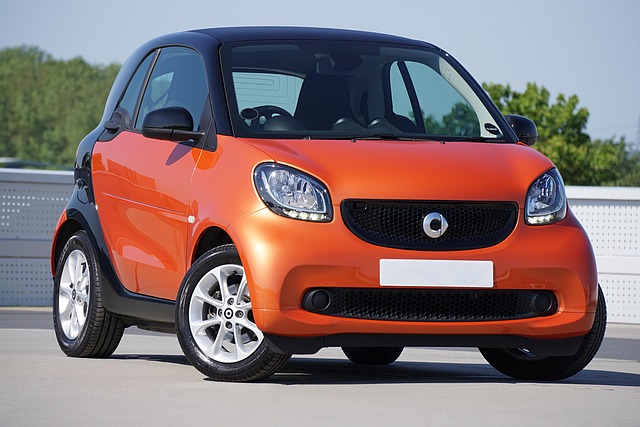Advanced Driver Assistance Systems (ADAS), powered by sensors, cameras, radars, and AI, revolutionize road safety. Integrating with smart city infrastructure and personalized driver profiles, Select Smart Car Tech enables V2X communication for real-time data exchange, enhancing threat response times. Eco-driving tips promote green practices while minimizing environmental impact. These systems prioritize safety and connected experiences, transforming driving into a modern vehicle owner's essential consideration. Key features include collision avoidance, reduced human error, improved control, and voice-activated commands, paving the way for autonomous driving in the future.
“Staying ahead in today’s digital age, auto crash avoidance systems have emerged as a game-changer in the automotive industry. With advancements in smart car technology, these systems are revolutionizing road safety. Our comprehensive guide delves into the intricacies of understanding these complex yet vital tools, exploring key technologies from sensors to AI that power their capabilities. We highlight the numerous benefits of advanced driver assistance features and dissect the various sensor types for collision detection. Furthermore, we navigate system integration and future trends shaping crash avoidance tech, empowering you with insights on selecting smart car tech for enhanced safety.”
- Understanding Auto Crash Avoidance Systems
- Key Technologies Powering These Systems
- Benefits of Advanced Driver Assistance Features
- Common Sensor Types for Collision Detection
- Navigating System Integration and Compatibility
- Future Trends Shaping Crash Avoidance Tech
Understanding Auto Crash Avoidance Systems

Auto Crash Avoidance Systems (ACAS) are a crucial aspect of modern vehicle technology, designed to mitigate accidents and enhance road safety. These systems leverage a combination of sensors, cameras, radars, and advanced algorithms to detect potential hazards and take preventive actions. By integrating smart city infrastructure and personalized driver profiles, ACAS becomes an integral part of the evolving smart car ecosystem.
The integration of V2X (Vehicle-to-Everything) technology further amplifies their benefits, enabling direct communication between vehicles, infrastructure, and even pedestrians. This interconnectedness facilitates real-time data exchange, allowing ACAS to anticipate and respond to threats more effectively. Moreover, green driving tips can be incorporated into these systems, promoting eco-friendly practices that not only reduce environmental impact but also contribute to overall road safety by minimizing factors that lead to accidents.
Key Technologies Powering These Systems

The key technologies powering auto crash avoidance systems are revolutionizing the way we perceive safety on the roads. Among these, Select Smart Car Tech stands out as a game-changer. Advanced driver assistance systems (ADAS) leverage sophisticated sensors, cameras, and radar to detect potential hazards, providing drivers with crucial warnings and interventions. These include lane departure warnings, which alert motorists when they unintentionally drift from their lane, and adaptive cruise control, maintaining a safe distance between vehicles.
Moreover, hands-free calling and messaging in-car entertainment systems are integrated into these smart car technologies, ensuring that drivers remain focused on the road while still enjoying connected experiences. Remote vehicle access capabilities also add another layer of convenience and safety, allowing users to monitor and control their vehicles remotely. These innovations collectively contribute to a safer driving environment, making auto crash avoidance systems not just an option but an essential consideration for modern vehicle owners.
Benefits of Advanced Driver Assistance Features

Advanced Driver Assistance Features (ADAS) are transforming the way we drive by offering a range of safety and convenience benefits. By leveraging cutting-edge technologies like V2X communication, these systems enable vehicles to navigate roads with enhanced awareness and precision. When selecting a smart car equipped with ADAS, drivers can expect improved collision avoidance, reduced human error, and better overall control.
The integration of V2X technology, for instance, allows cars to exchange data with infrastructure and other vehicles, providing real-time information on traffic conditions, road hazards, and potential collisions. This enables the car to make faster, more informed decisions, ultimately enhancing safety on the roads. Moreover, as autonomous vehicle navigation and car connectivity solutions continue to evolve, these features are paving the way for fully self-driving capabilities, promising a future of safer and more efficient transportation.
Common Sensor Types for Collision Detection

Modern auto crash avoidance systems rely on a variety of sensors to detect potential collisions and take proactive measures to prevent or mitigate damage. Among the most common sensor types are radar, lidar, and cameras. Radar technology uses radio waves to determine the distance and speed of objects, making it highly effective in adverse weather conditions. Lidar, on the other hand, employs laser pulses to create detailed 3D maps of surroundings, offering exceptional accuracy for obstacle detection.
Cameras play a crucial role in advanced driver assistance systems (ADAS) by processing visual data from street signs and markings, pedestrians, and other vehicles. Integrating speech recognition technology enhances safety further, enabling drivers to interact with home automation controls from their car or receive eco-driving assistance through voice commands. Additionally, Vehicle-to-Everything (V2X) technology benefits from these sensors by facilitating real-time communication between vehicles, infrastructure, and devices, ultimately improving overall traffic safety and efficiency.
Navigating System Integration and Compatibility

Navigating the integration and compatibility of auto crash avoidance systems is a critical step in enhancing vehicle safety. As we delve into the world of smart car technology, selecting the right tech becomes paramount. Modern cars are equipped with various sensors, cameras, and radars that collect data at an unprecedented rate. The challenge lies in seamlessly integrating these disparate components to provide real-time performance tracking and effective crash avoidance.
One promising solution is Vehicle-to-Everything (V2X) technology benefits, which enable two-way communication between vehicles and their surroundings. By leveraging smart car technology features, V2X systems can detect potential hazards, predict movements, and alert drivers in time to avoid collisions. Ensuring these systems work harmoniously across different vehicle models and manufacturers is crucial for widespread adoption, fostering a safer and more interconnected transportation network.
Future Trends Shaping Crash Avoidance Tech

The future of crash avoidance systems is being shaped by several emerging trends and technological advancements in the automotive industry. One key area is the integration of smart car tech, where vehicles are equipped with sophisticated sensors and artificial intelligence (AI) to detect and predict potential hazards on the road. These systems can analyze surroundings in real-time, including other vehicles, pedestrians, and traffic signs, enabling faster reaction times and more effective collision avoidance.
Additionally, voice-activated commands and advanced driver assistance systems (ADAS) are expected to play a significant role in congestion mitigation strategies. With the rise of low-emission vehicles, these technologies not only enhance safety but also contribute to sustainability goals. The continuous development of collision avoidance systems, coupled with advancements in autonomous driving, promises to revolutionize road safety standards, making our roads safer and more efficient for everyone.
Auto crash avoidance systems, powered by advanced technologies like cameras, radars, and LiDAR, are transforming the way we drive. These systems offer numerous benefits, from improved safety to enhanced driving experiences. As car tech continues to evolve, future trends promise even smarter, more integrated solutions. When selecting a smart car with these features, consider system compatibility and the diverse sensor types for optimal collision detection. Embrace the advancements in crash avoidance tech to navigate the road ahead with greater peace of mind.
